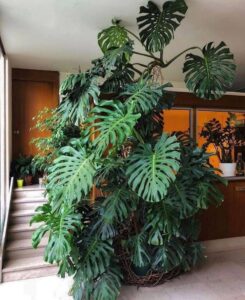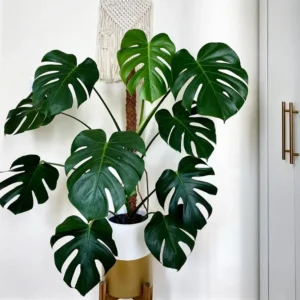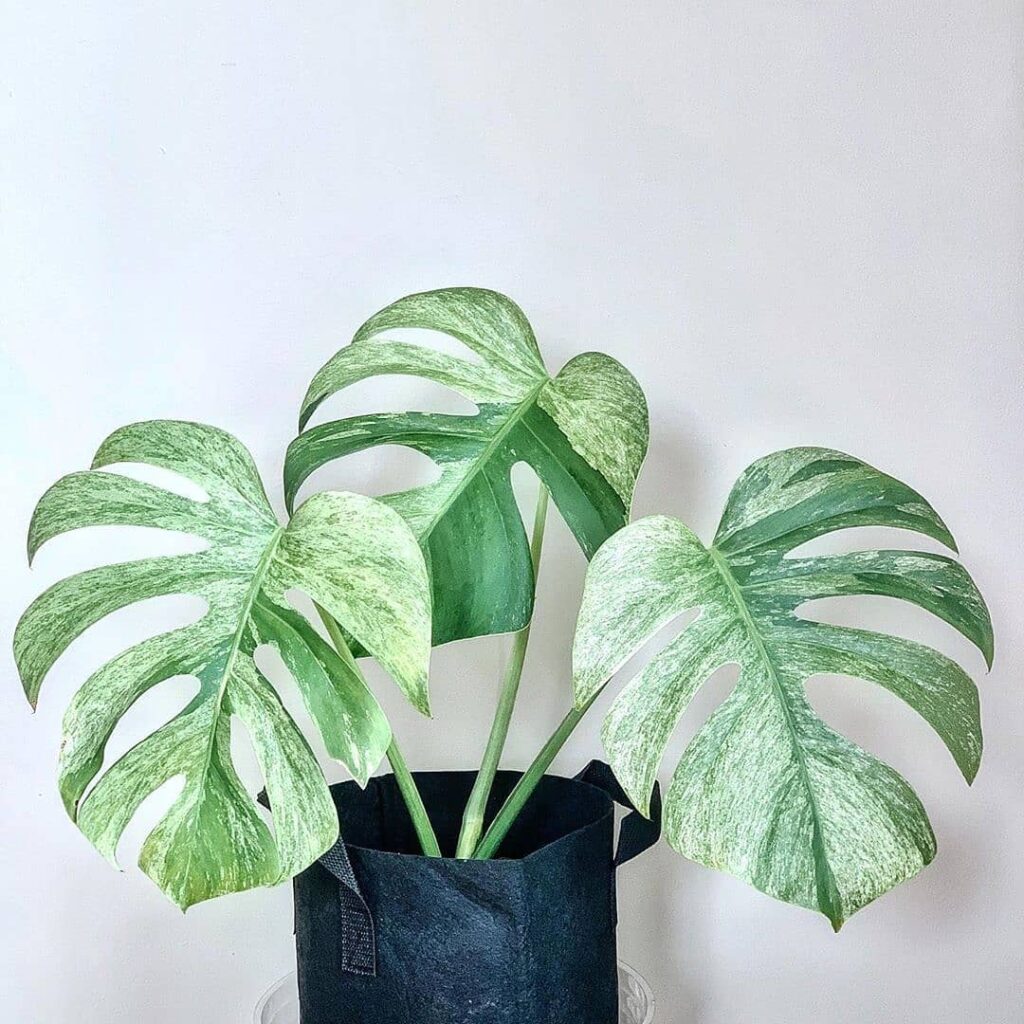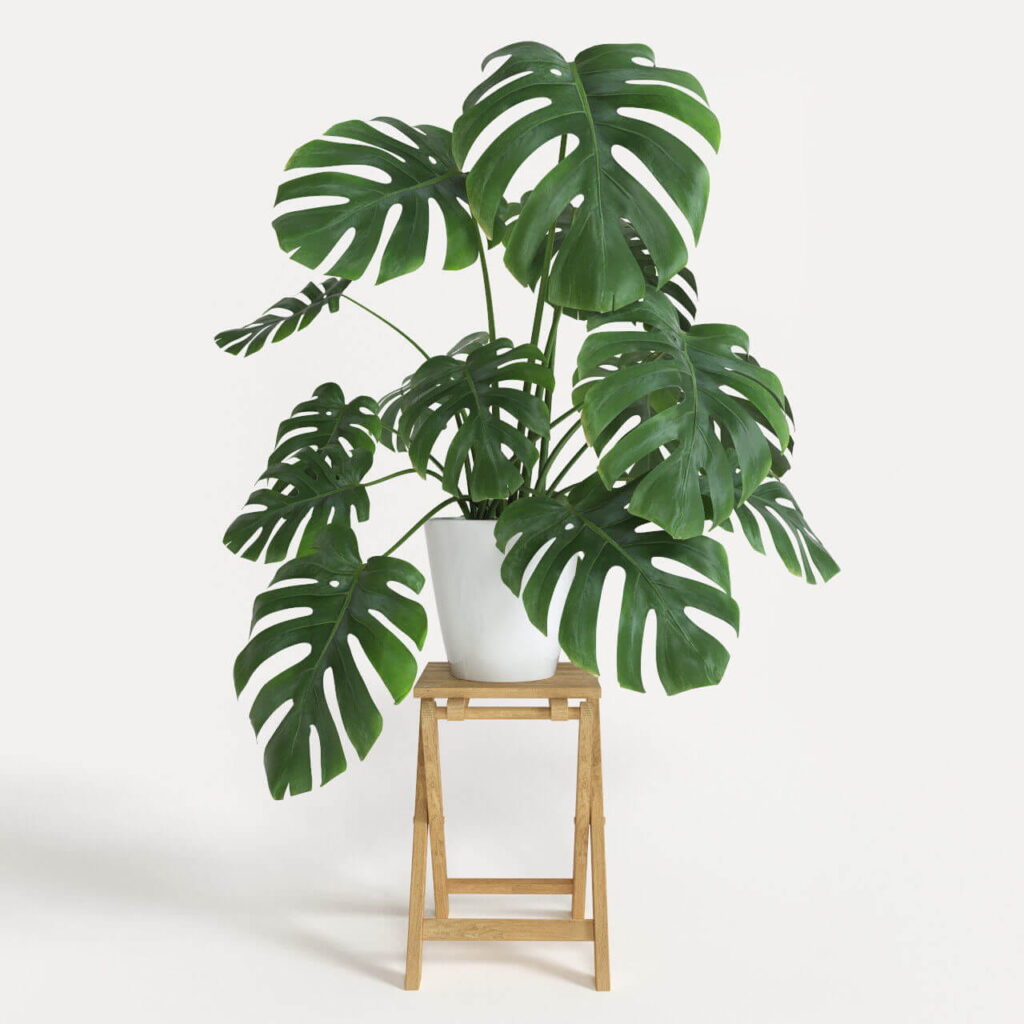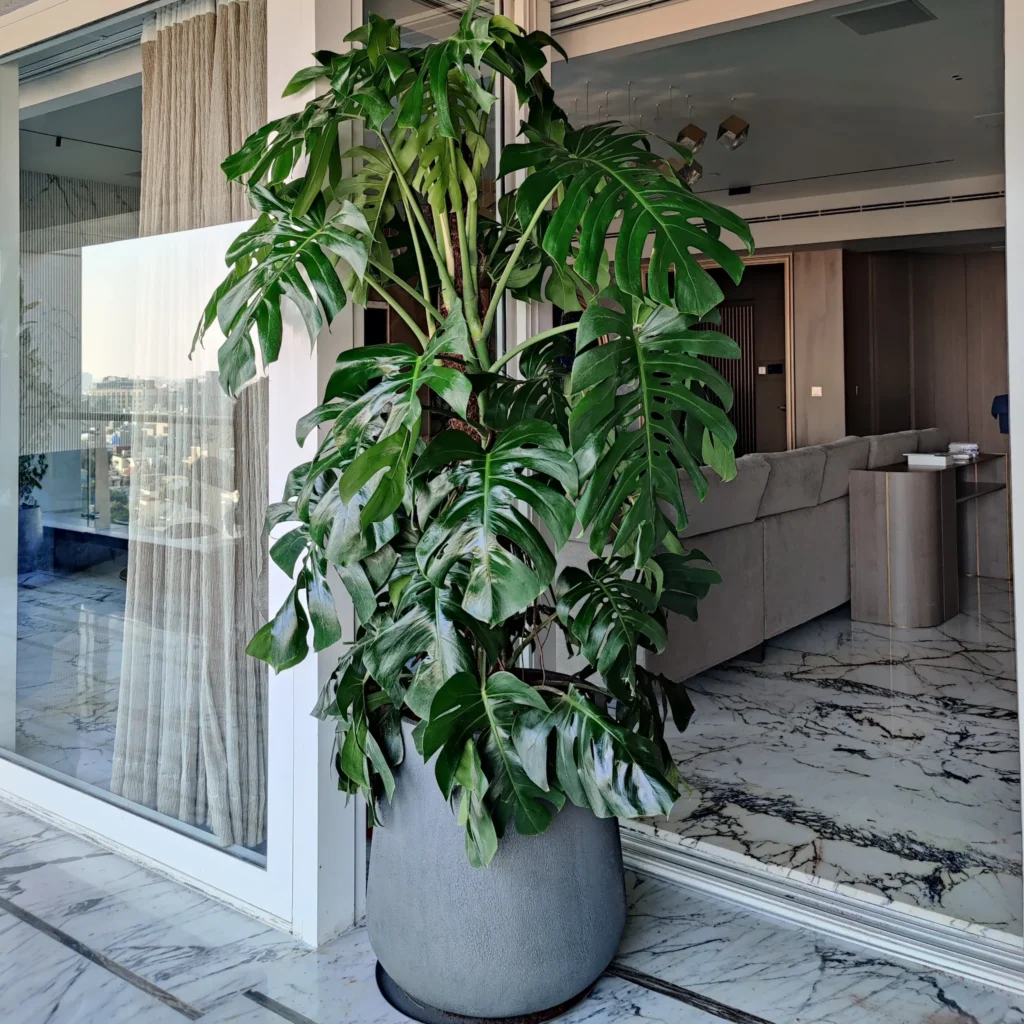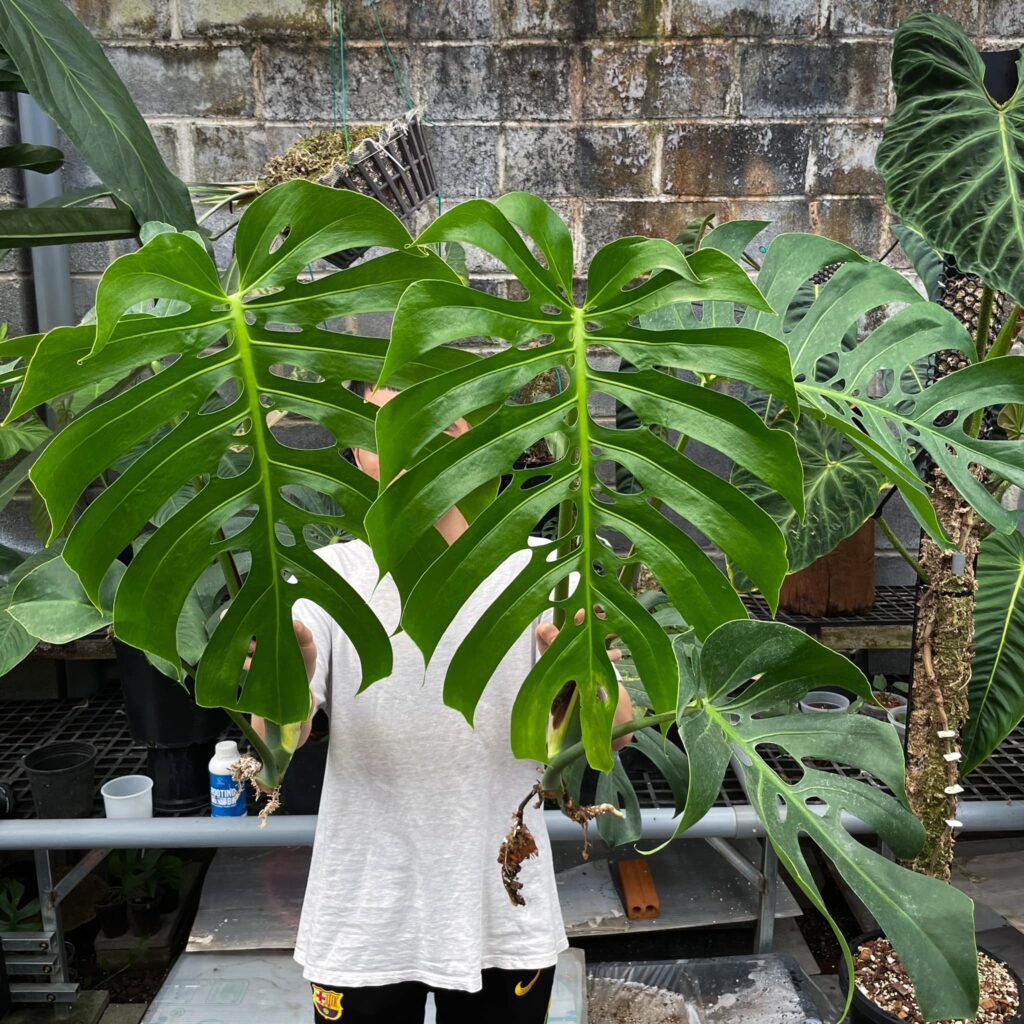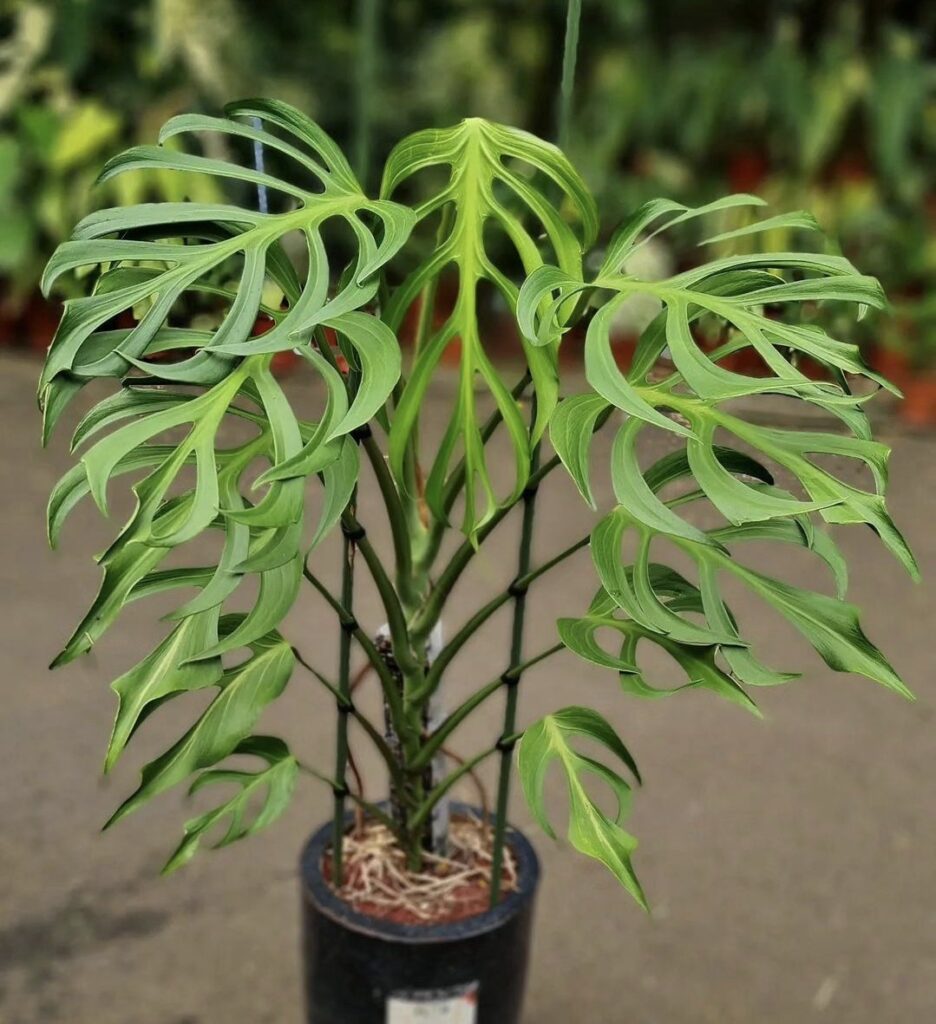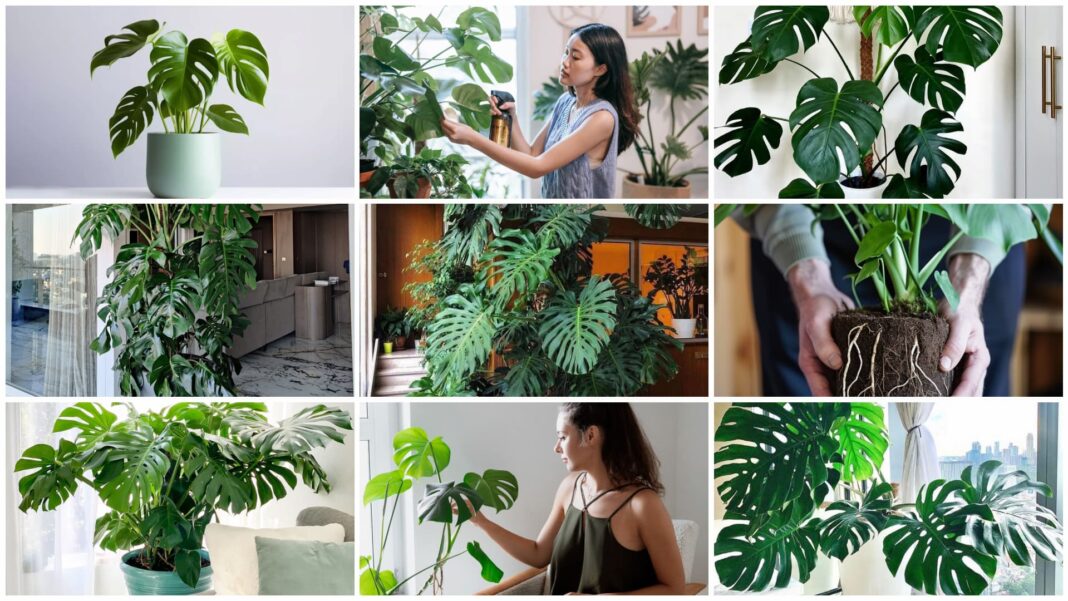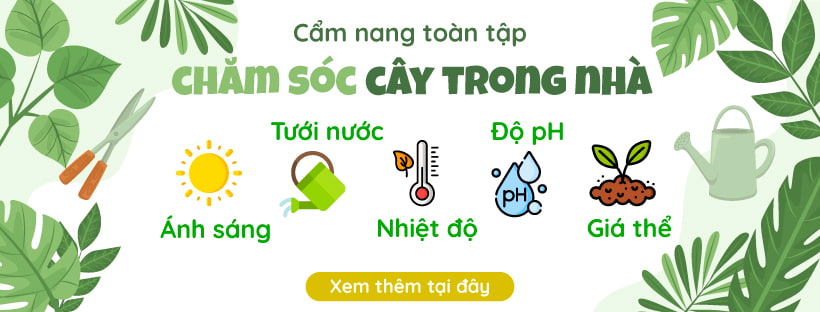Monstera, also known as “Slit-leaf Pothos”, is a symbol of modern and luxurious indoor plants. It is also considered a “national” ornamental plant. The most detailed article about monstera, also known as South American Pothos, Split-leaf Pothos.
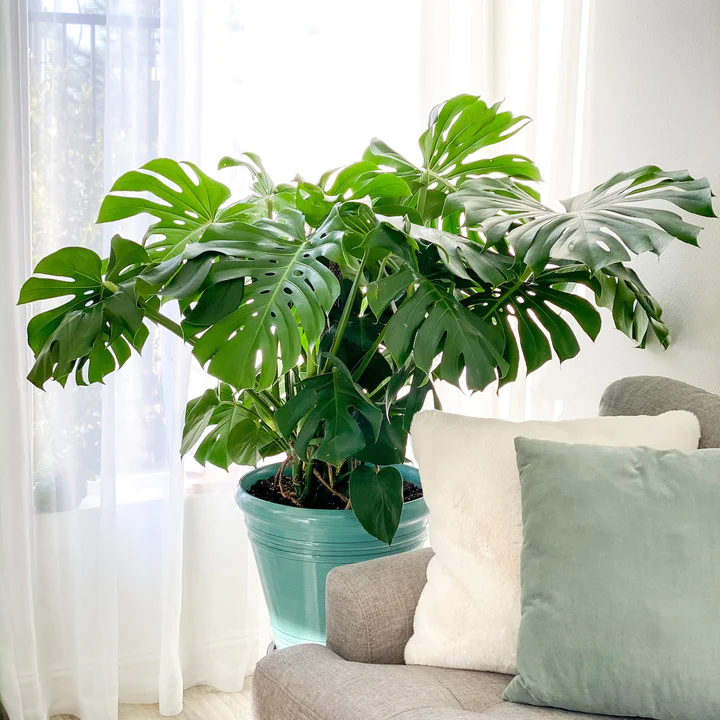
Introducing Monstera
Origin of Monstera plant
Monstera plants are native to the tropical forests of Central America and South America, especially the area from southern Mexico to Panama.

Monstera plant meaning
With its unique leaf shape, the Monstera plant brings a natural, modern beauty and is suitable for all styles. landscape decoration.

“Monstera has the ability to absorb toxic substances in the air”
Like other pothos plants, Monstera plants have the ability to absorb toxic substances in the air, helping to keep the living space clean and fresh.
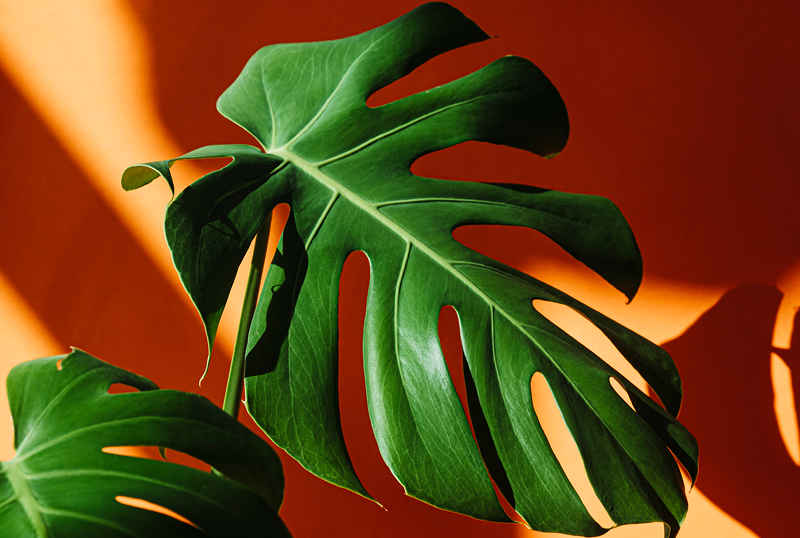
According to Feng Shui, Monstera plants symbolize prosperity, wealth and peace. Perhaps because of their elegant shape.
General characteristics of Monstera plants
Why are Monstera leaves split?
The leaf is a leaf morphology In particular, to help light and rain easily penetrate the foliage, optimizing light absorption in low light environments.

Additionally, the holes help to prevent them from being damaged by the wind since monsteras often have very large foliage.
How to grow and care for Monstera plants at home
Light for Monstera
Monstera plants prefer bright, indirect light. Avoid exposing the plant to direct sunlight for too long, as this can cause leaf burn.
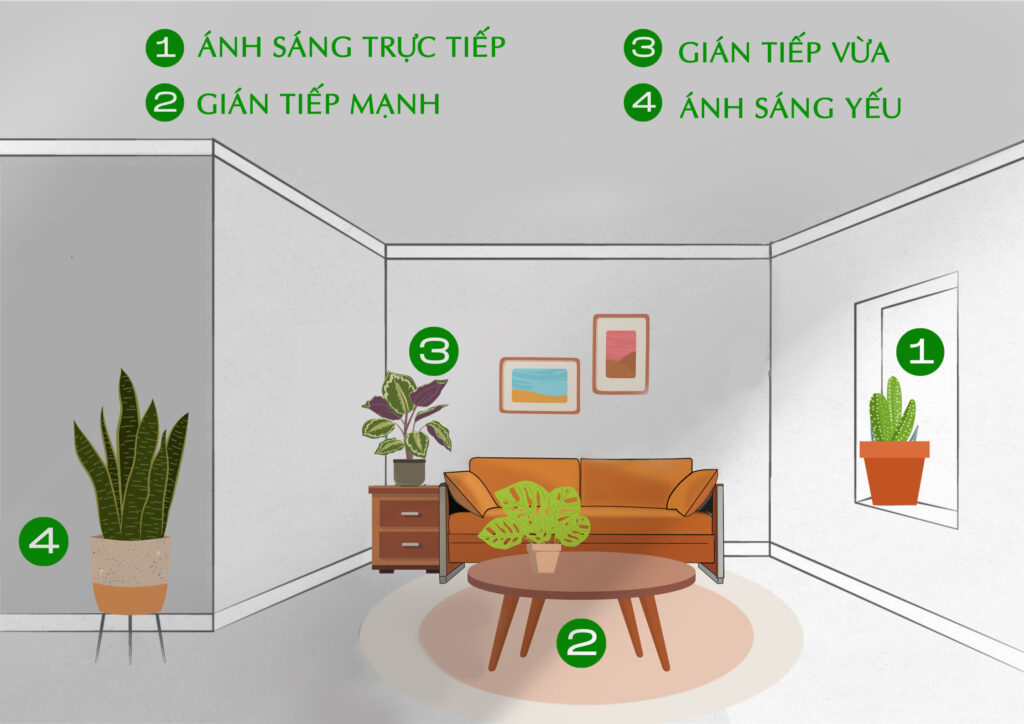
Monstera should be placed near a window with a strong light source. If you plant Monstera in the garden, make sure the plant has shade or does not receive direct sunlight for too long. See more Guide to Types of Light for Indoor Plants.
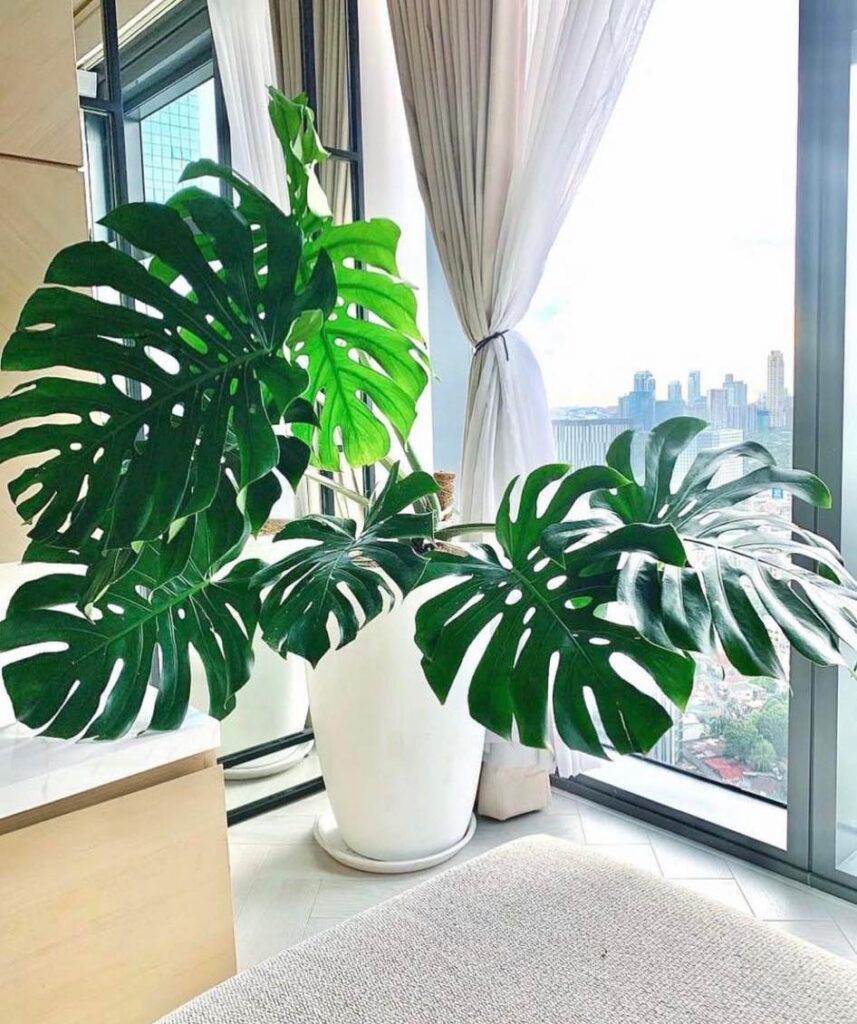
Watering Monstera
Monstera plants do not need much water, water regularly, about 1-2 times a week depending on environmental conditions. You can spray water on the leaves to help cool the leaves and create more humidity.
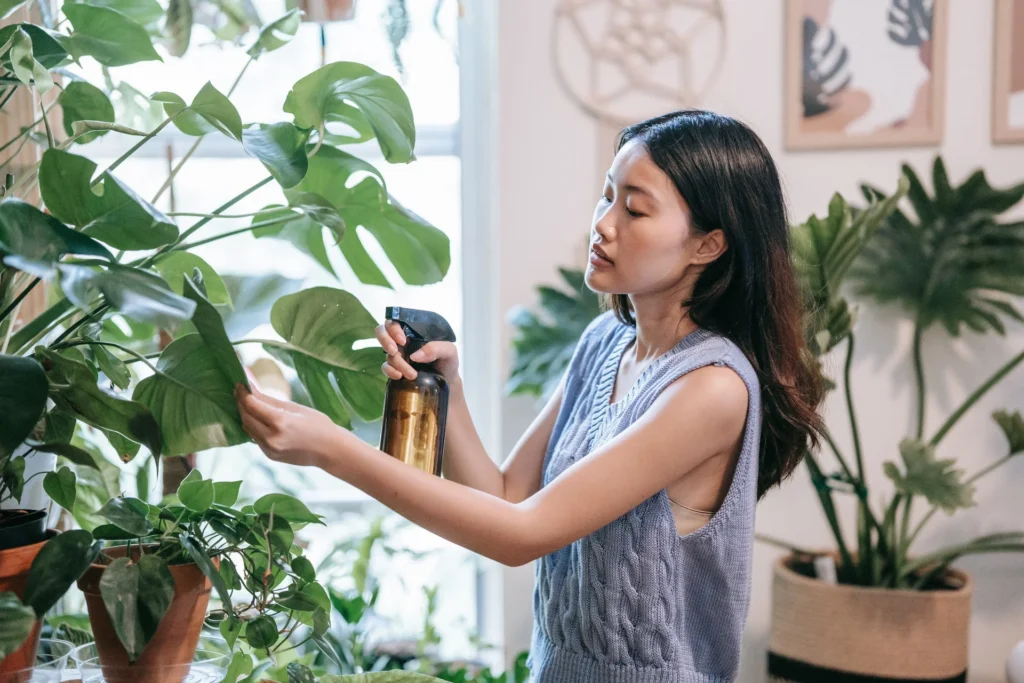
Avoid overwatering, as constantly wet soil can cause root rot.
Temperature and humidity suitable for Monstera

“The suitable humidity for Monstera is from 60-70%”
Monstera grows well at temperatures from 20–30°C. The suitable humidity for Monstera is from 60-70%, high humidity will help the plant stay healthy and grow quickly.
Monstera plants can still survive in humidity below 60% but they will not grow well.
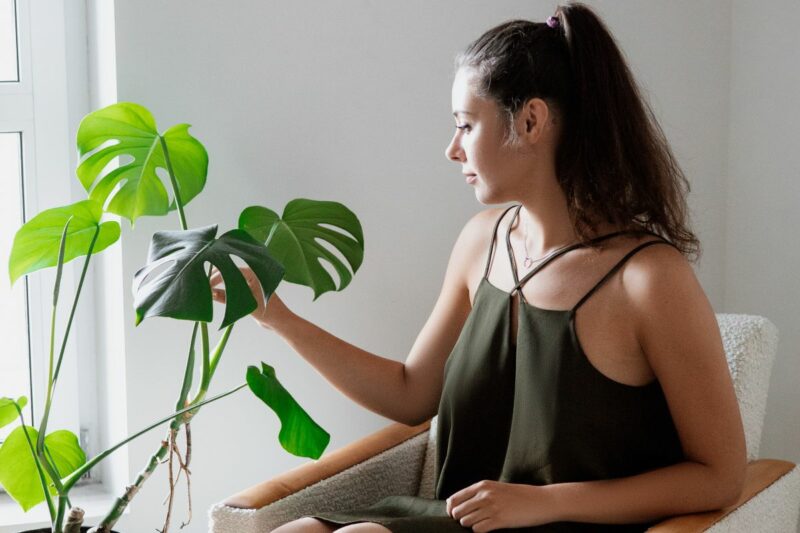
Ideal pH for Monstera Plants

The ideal pH for Monstera plants ranges from 5.5 to 7.0, that is from slightly acidic to neutralThis is the right pH level for plants to absorb maximum nutrients from the soil, helping leaves to be green and plants to grow healthily.
Suitable Soil / Substrate for Monstera
Choose loose, well-drained, and nutrient-rich soil. You can mix loam, coconut fiber, and compost for best results.

“Choose soil that is loose, well-drained, and rich in nutrients.”
Fertilizing Instructions for Monstera Plants
Spread a thin layer of vermicompost (about 1–2 cm) on the soil surface every 2 months or mix it directly into the soil before planting.
Spring and summer (growing period): Fertilize with organic fertilizer every 2-4 weeks, because this is when the plant grows strongly.
“Fertilize monstera in spring.”
Fall and winter (rest period): Reduce fertilizer to once a month or stop fertilizing, depending on the growth of the plant.
Signs Monstera Needs Fertilization:
- New leaves are smaller than normal or have no slits.
- Old leaves turn yellow and pale.
- The plant grows slowly, with few new leaves.
When should I repot my Monstera?
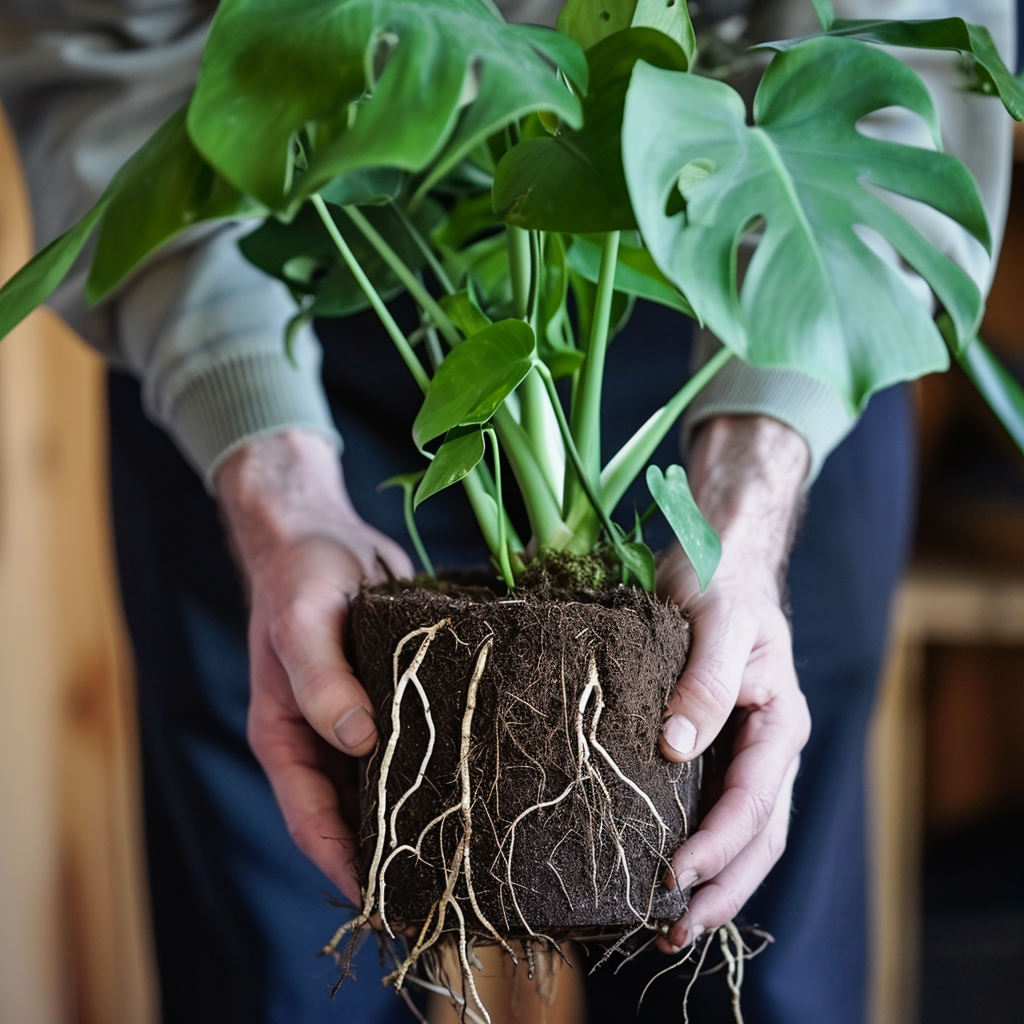
Repot Monstera annually in spring. Mature plants can be repotted every 1-3 years. Repot if roots become overgrown or protrude from the drainage hole.
Common Pests & Insects in Monstera Plants

Common pests & insects in Monstera plants and solutions:
- Mealybugs – Remove with a cotton swab dipped in alcohol.
- Insects – Wipe each branch with a cotton swab or prune affected stems.
- Bed Bugs – Kill them with a strong spray of water. Apply insecticidal soap.

- Thrips – Isolate and treat with neem oil or spinosad.
- Bacterial Leaf Spot – Improve airflow. Remove affected leaves. Apply fungicide.
- Leaf spot – Prune off affected leaves. Apply neem oil or sulfur fungicide.
- Root rot – Repot in new, sterile soil. Improve drainage. Allow soil to dry between waterings.
Clean Monstera leaves regularly
Because the leaves have a large surface area, they often get dirty. If you take the time to clean your plant regularly, it will look better.
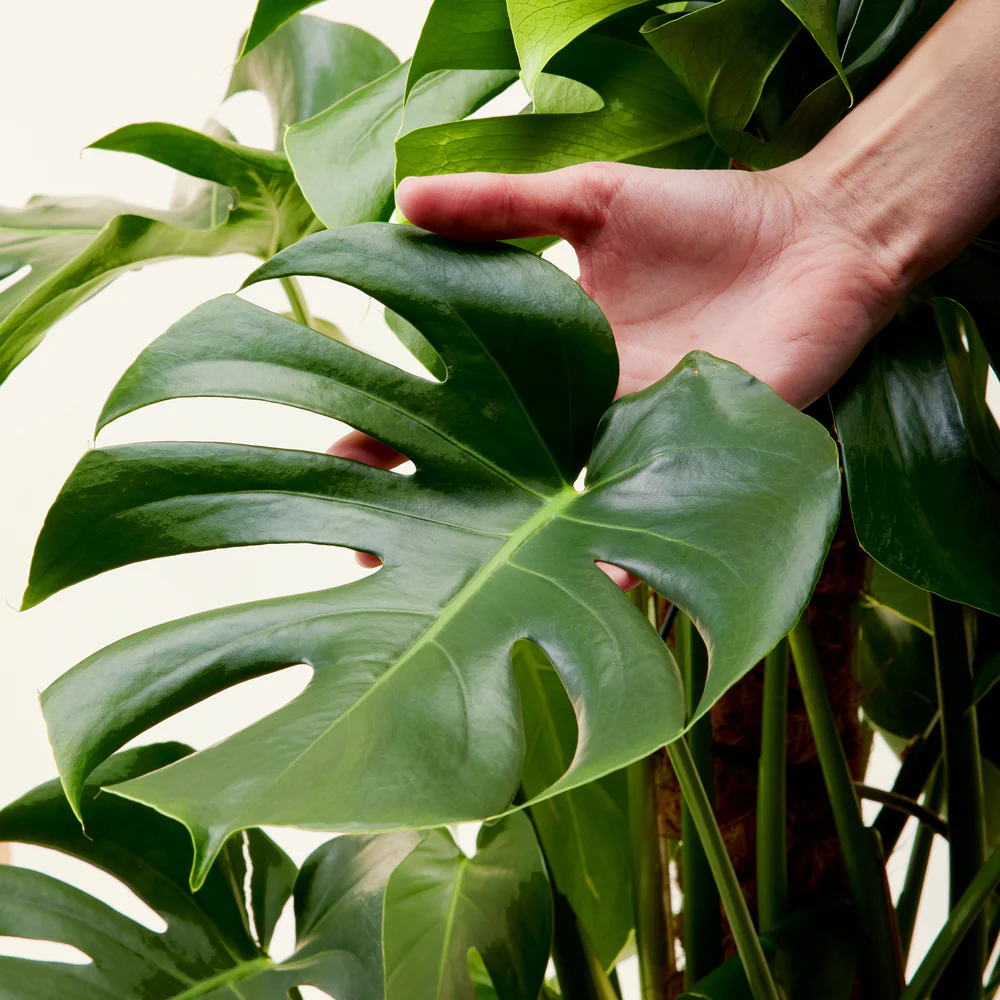
In addition, wiping the leaves often also helps the plant photosynthesize and metabolize better.
5 Most Popular Monstera Varieties
There are many different types of monstera plants, here are the top 5 most popular types in the world:
See more monstera plants at Monstera plant library of KLA.
Beautiful pictures of Monstera plants
